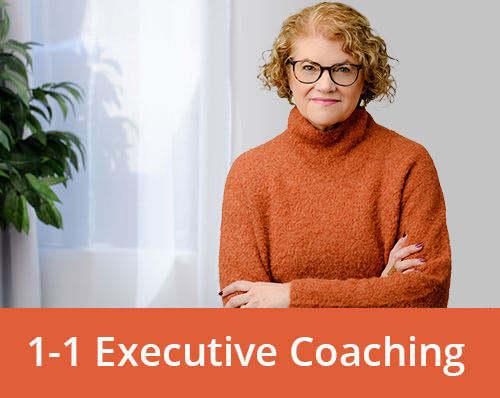I feel like we’ve been in “Diversity, Equity and Inclusion 101” class for decades now. Starting more than 30 years ago organizations first funded the “D” (diversity). Then when those programs didn’t diversify workforces enough, they added the “I” (inclusion) and more recently the “E” (equity) to bring racial and gender balance into their leadership ranks. Now we’re talking about the “B” (belonging). Yet the lack of true diversity, equity and inclusion in our workplaces and leadership remains.
An emphasis on welcoming diverse minds and bodies into leadership is still very much needed. Diverse board representation remains low and among executive team numbers it’s even lower (women’s representation 15-28%, ethnic minority representation 13-17%, with executive team numbers lower than board members). Improvement in these numbers recently has been glacial.
Given that gazillions of dollars have been poured into Diversity, Equity and Inclusion (DEI) initiatives to create more diverse workplaces, the return above isn’t all that impressive. What gives?
There are plenty of true DEI primers available so I won’t reiterate all the research that tells us about systemic barriers, unconscious bias and the limited impact of performative allyship, but I will summarize what I observe from both our research and the interpersonal dynamics I pick up through coaching many female and underrepresented leaders. I especially want to highlight a few dynamics I think are underappreciated by the White majority in leadership. Knowing these issues can make us better DEI allies to those around us no matter where on the ladder of privilege and inequity we personally hang out.
You can’t change what you don’t see and can’t understand
As a leader, you should be aware by now that unconscious bias is real. While bias awareness should be a part of every DEI program, I’m still surprised how many people don’t understand that it applies to them, because everyone with a mind experiences it. The more you deny it the more you do it, and to live in a diverse and inclusive society we all have to become more conscious of our subconscious stereotypes and work to correct them.
The fact is that our brains were built to sort and judge things, especially people. Millenia of evolution have shaped our brains into highly effective social sorters and judgers, in ways that don’t always align with our conscious values. To create a fair society and workplace, this bears some examination.
By labeling this normal human characteristic of our brain physiology “unconscious bias” we’ve taken some of the stigma out of its previous verbal cues as conscious prejudice and various “-isms” (i.e., racism, sexism, ageism, ableism etc.) Yet this labeling has also made it easier to excuse those who don’t want to do the hard work of:
- becoming mindful of how their subconscious operates
- aligning their subconscious responses and reactions to others with their conscious values
While there’s no simple trick to mindfulness, much less using it to root out your unconscious bias, I recommend a process from The Racial Healing Handbook of interrogating your racial socialization (i.e., how you learned about race/gender etc.) and rebuilding it as a way to think about surfacing your own biases and changing them to better align with your values.
When you go through a process of becoming conscious of the ways in which your own unconscious biases put you into the mix of DEI problems in your organization, you start to see how subtle, context dependent and interpersonal inclusivity has to be. Yes, there must be structural change in HR policies and practices to remove barriers to DEI, but these structural barriers were created to reinforce the personal world views of the leaders who put them in place. If you want true change it has to start with the leaders’ worldviews and mindsets. This means you.
Structural changes will have minimal effect unless you change your own mindset and, importantly, interpersonal style. Why? Because whether you accept the responsibility or not, as a leader you are a role model and you model cultural norms. In workplace cultures, norms reliably trump rules, which makes you very powerful indeed.
An infatuation with the extremes opens the door to blame and shame
When you become aware of the subtleties of interpersonal inclusion, and take responsibility for the ways you participate in it, this awareness makes it harder for you to project inequity problems onto others. Tracking and changing your own biases, you quickly realize that nothing is black and white (literally) and that the most impactful work gets lost when the extremes are battling it out noisily all around you.
Sadly, our broader culture is losing its tolerance for the more moderate, middle way in many areas of life and work. And when we elevate the extremes at the expense of the murky middle we allow for blame and shame behavior to emerge.
Guess what squashes efforts to bridge the divides that keep us from finding true diversity, equity and inclusion? Yep. Blame and shame (BS), from both extremes. This kind of BS just encourages everyone in the culture to:
- project the problem onto other people
- avoid our own responsibility to change
- drive us into our corners to lick our wounds without engaging with people with different perspectives than ours
Basically, a BS culture is very opposite of what’s needed to encourage true alliances that diminish stereotypes and systemic DEI barriers.
So lose your tolerance for the extremes and invite others into the middle, where the work is hard and the rewards are great.
Healing our cultural -isms requires healing ourselves first
Once you’re on the path to evolving your unconscious biases into conscious behaviors that align with your values, you begin to see how out of alignment many of your behaviors are with the values you hold most dear.
The most common disconnect here is the value of RESPECT. Once you learn to see how your behavior, including small microaggressions born of your good intent, can be unconsciously disrespectful even when you consciously intend it to be kind.
Here’s an idea I’d like to see included more often in programs purporting to further diversity, equity and inclusion goals: we all believe we’re respectful, yet I observe that when it comes to respecting people who are not like us, we’ve tripped into one of the only weaknesses of The Golden Rule. Treating others as you wish to be treated is great advice when others are like us. When they are not like us, a modified version may be more appropriate: “Treat others as they wish to be treated.”
A mindset that allows you to learn how others experience you, and learn how they want to be treated by you (i.e., how you can genuinely show them RESPECT in a way they will feel respected), requires that you center the others’ experience instead of your own.
Centering others is really hard.
We are designed to be the center of our own universe. When we’re like those around us, centering ourselves in a cultural context naturally centers them as well. But it simultaneously “others” those who are not like us until we expand the center to include them, or shift the gravitational center to their context entirely.
Here’s the hardest part. Centering others requires that we be authentically and emotionally secure in our own identity, cultural awareness and biases. And becoming emotionally and authentically secure as a human being requires healing wounds we often don’t even know we have. When it comes to race and gender in particular, every one of us (yes, all of us) carries hurts, guilts and festering, unaddressed anguish. Step one in moving beyond these wounds is to acknowledge that they exist. Beyond that, it’s just work to address them, let some go and evolve your identity to incorporate what’s left behind.
It turns out that efforts to bridge the divides between racial divides, gender expectations, ageist attitudes, sexual orientation beliefs and all kinds of other barriers to DEI requires people to participate in the bridgebuilding who are addressing their own interpersonal biases and healing their own wounds. This requires multiple safe spaces, for people who share the same healing journey and for those whose wounds challenge one another.
Here’s the key implication to successful DEI efforts, one we too often ignore at our peril: people who are processing their own pain struggle to engage effectively in healing a divide with others who’s simultaneous healing process triggers their own. I’ve experienced this myself in coming to terms with my own White privilege (still a work in progress). In several encounters with Black people, my unprocessed guilt made me extra sensitive to their righteous anger at White people, and in those moments I was not able to be my best self, even though I tried. Later, having developed a better understanding of where I bore responsibility for abusing my privilege and where I didn’t, I was able to be more gracious and understanding in similar interactions.
By contrast, when those well into their own healing come together to support each other instead of trigger each other, they can build bridges together. But crossing it must still be a healing journey for everyone.
Changemaker, heal thyself.
Allyship requires two-way relationships and agreement
Once you’re productively in bridge-building mode across racial-ethnic, gender, generational, neurodiverse and so many other divides, things get interesting. The term popularly used to describe how people, especially White people, should participate in bringing down DEI barriers is “allyship,” advocating that White people (and White Men especially) must ally with marginalized and underrepresented groups.
But most allyship descriptions I’ve come across in Diversity, Equity and Inclusion 101 programs try to tell White people what they should do, as though they are so powerful that by engaging some individuals to simply change their behavior they can undo centuries of systemic oppression.
Sorry, White people, we’re not THAT powerful. Thinking that if we change all by ourselves the whole system will change is centering us and violating that RESPECT principle by excluding from the solution the very people we want to help. True allyship requires building alliances, “negotiated” agreements about how all parties will behave in support of each other. It requires relationship, dialog, give, take and some level of sacrifice and change by all parties. And when it comes to DEI issues, the underrepresented and marginalized people have sacrificed enough. White people need to step up here more than ever. Let’s start by uncentering ourselves. When it’s hard you know you’re doing the work.
You can’t fake it
Finally, all this work is just so hard–and perceived as so tangential to most organization’s missions–that it’s easier to throw bazillions of dollars, a Chief Diversity Officer and some public relations at the problem.
“Checked the diversity box! What’s next on the agenda?”
We have a word for this insincere and ineffective kind of DEI initiative: Performative Allyship. Because we have a word for it, we can now see it. And because we can see it, we can hold others accountable to not choose it.
Don’t be that leader. Move beyond Diversity, Equity and Inclusion 101. Refuse to check the box. Start down the intra-personal journey to diversity, equity and inclusion across our divides. Do the hard work to become a better person and you’ll be removing barriers for others along the way. Win-win.
Join Our Women’s Mastermind
May 15 – What Double Standards Apply to Women? Which Ones Apply to You?
June 19 – Are women more ambitious–or less ambitious–than they used to be?







